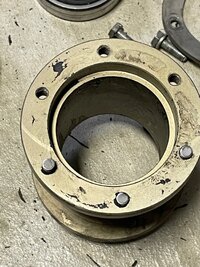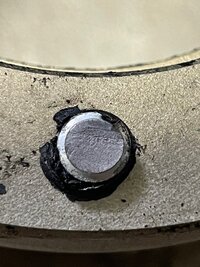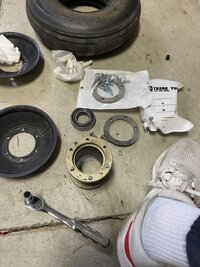Doctordantodd
Member
- Joined
- Apr 22, 2020
- Messages
- 72
- Location
- Sioux Falls, SD
- Aircraft
- Magni M16, M24 Plus, ELA Eclipse, Dominator
- Total Flight Time
- 750 hours
Eclipse has a tubed tire and I suspect that maybe I had too much pressure. The 3rd (out of 6) screw fractured on take off and I was able to abort. I thought my tire blew, but it was actually the rim. Anyone ever experience this? I noted that one of the six screw on the other side has also lost its head.





